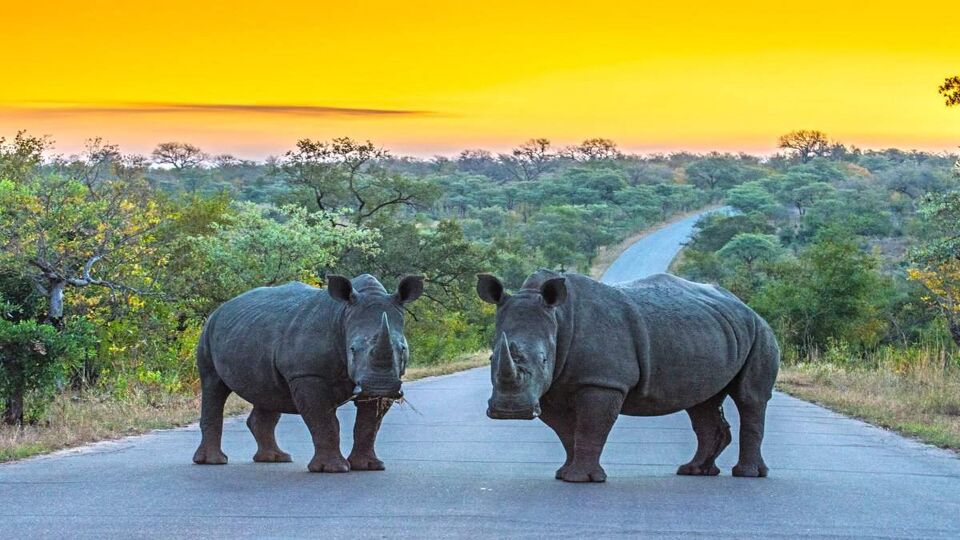Hazyview
Price ZAR 2,750
Min age 3
Rating 4.96 / 5 [865 ratings]
Tour supplied by:
Bucket list destination:
Kruger National Park, South Africa

One of the biggest tracts of national park in Africa – nearly 20,000 square kilometres – the Kruger is characterised by beautiful tree bushland, wide rivers and very good tourist facilities. It’s been a game park since 1898, with two million hectares set aside for wildlife, and luxurious accommodation both inside the park and on private concessions on its borders.
Known for big herds of elephant, as well as leopard (particularly in the Sabi Sand area), lion, buffalo and white rhino, Big Five sightings are almost guaranteed.
With easy access from almost anywhere in South Africa by plane or car, this game park is a great all-rounder.
Located in the northeast of South Africa, with Mozambique to the east and the pretty Lowveld to the west.
The north of the park is hillier, more scenic and hotter in summer – and less touristed; the south is drier and more popular.
Those driving themselves should consider the scenic route via Dullstroom and the Long Tom Pass, taking in Hazyview and the Lowveld area.
Our selection of the best Viator tours of this destination, plus helpful tickets and transfers
Hazyview
Price ZAR 2,750
Min age 3
Rating 4.96 / 5 [865 ratings]
Tour supplied by:
Hazyview
Price ZAR 2,900
Min age 2
Rating 4.98 / 5 [363 ratings]
Tour supplied by:
Hazyview
Price ZAR 2,280
Min age 3
Rating 4.97 / 5 [204 ratings]
Tour supplied by:
Hazyview
Price ZAR 2,840
Min age 0
Rating 4.95 / 5 [97 ratings]
Tour supplied by:
Hazyview
Price ZAR 2,250
Min age 0
Rating 4.88 / 5 [77 ratings]
Tour supplied by:
The Kruger is a year-round destination, with daytime temperatures ranging between 18C and 33C in summer (November to March), and between 6C to 26C in winter (May to August). Rain usually falls in summer, mostly in the evenings after hot days, when downpours with lightning are frequent. The most pleasant (and peak) time to safari is winter, when it’s cooler, the bush is less dense and game can be more easily spotted and gathers near water. The changing colours of the Mopane trees in autumn is particularly pretty, while summer is best for birdlife and to see new-born animals.
It’s about a five-hour drive from Johannesburg to the park gates, then anything from 30 minutes to three hours’ drive to camps. Just outside the park is Kruger Mpumalanga International, from which flights connect to domestic airports, neighbouring African countries and bush airstrips (from Johannesburg about one hour, Cape Town two hours). Light aircraft can also land at Hoedspruit (for central Kruger camps) and Phalaborwa (for northern Kruger camps), both just outside the park.
Kruger is one of the best parks for self-drive safaris, which brings a lot of day-trippers in – and can mean unfortunate congestion, particularly near the gates. The further you stay from the gates the better. Cars are not necessary as lodges and camps will provide for game drives, plus you get the benefit of an informed guide who will explain the flora and fauna, and know the best game viewing areas. Many of the upmarket camps also offer a private vehicle for an additional fee. Worth it, if you are interested in specific creatures – or want some time alone.
Most of the park offers opportunities to see the Big Five, wild dog, cheetah, hundreds of antelope and more than 500 species of bird, although game sightings are especially good in certain areas. The southern Sabi Sand private reserve is known for leopard – and being outside the park, rangers can track off-road. Central and southern Kruger has big elephant populations – seen best in winter around waterholes – as well as white rhino (black are rarely seen). The north, with its beautiful scenery, hills and rivers, has a great variety of birdlife, particularly in summer (October to March).